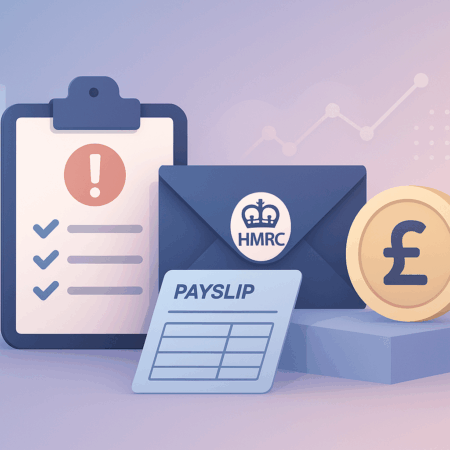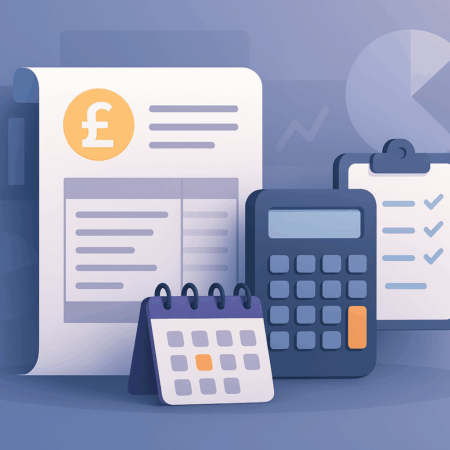Selling a buy-to-let property in the UK can feel like a financial high-wire act. You’ve got the thrill of a sale, but then comes the sobering reality of Capital Gains Tax (CGT)—the tax on the profit you make when your property’s value has climbed. Whether you’re a seasoned landlord or dipping your toes into the property market, figuring out your CGT liability can be a bit of a faff. That’s where a Capital Gains Tax calculator for property UK comes in, making the process as smooth as a cuppa on a rainy afternoon. In this guide, I’ll break down how CGT works for UK property, share a real-world example with proper calculations, and offer tips to keep your tax bill in check. Let’s dive in!
What Is Capital Gains Tax on Property?
Capital Gains Tax is the levy you pay on the profit (or “gain”) when you sell or dispose of an asset that’s gone up in value. For property, this usually applies to:
- Buy-to-let properties: Rental properties you own to generate income.
- Second homes: Holiday homes or properties that aren’t your main residence.
- Inherited properties: If you sell a property you’ve inherited, CGT might apply.
- Business premises: Property used for commercial purposes.
Your main home is typically exempt from CGT thanks to Private Residence Relief (PRR), but if you’ve let it out or used it for business, you might owe tax on part of the gain. The tax is only on the profit—the difference between what you paid and what you sold it for, minus allowable expenses like legal fees or renovations.
For the 2025/26 tax year, HMRC sets a tax-free allowance (the Annual Exempt Amount, or AEA) of £3,000 per person. Anything above that is taxed at rates based on your income and the type of asset. A good Capital Gains Tax calculator for property UK can crunch these numbers for you, saving you from drowning in spreadsheets.
Why Use a Capital Gains Tax Calculator for Property?
I remember when my mate Tom sold his buy-to-let flat in Manchester last year. He thought he’d just subtract the purchase price from the sale price and call it a day. Big mistake! He forgot about estate agent fees, improvement costs, and how his income affected his tax rate. A Capital Gains Tax calculator for property UK would’ve saved him hours of head-scratching. These tools let you input:
- The price you paid for the property.
- The sale price (or market value if you gifted it).
- Costs like stamp duty, legal fees, or estate agent commissions.
- Improvement costs (e.g., adding a conservatory).
- Your annual income to determine your tax band.
Within seconds, you get an estimate of your CGT liability, helping you plan your sale, budget for taxes, or decide if now’s the right time to sell. Plus, with property sales, you’ve got a tight 60-day deadline to report and pay CGT to HMRC, so accuracy and speed are key.
CGT Rates and Rules for 2025/26
Let’s get the nitty-gritty out of the way. For the 2025/26 tax year, here’s what you need to know:
- Annual Exempt Amount (AEA): £3,000 per individual. Use it or lose it—it doesn’t roll over.
- CGT Rates for Property:
- Basic-rate taxpayers (income up to £50,270): 18%.
- Higher/additional-rate taxpayers (income above £50,270): 24%.
- Reporting and Payment:
- For residential property, report and pay CGT within 60 days of completion via HMRC’s online service.
- For other assets, include gains in your Self-Assessment tax return by 31 January after the tax year (e.g., 31 January 2027 for 2025/26).
Note: These details are based on HMRC’s latest guidance as of July 2025. Tax rules can shift, so always double-check with a professional for your situation.
Calculating CGT on a Buy-to-Let Property: A Real-World Example
To show you how a Capital Gains Tax calculator for property UK works, let’s follow Priya, a 35-year-old teacher from Leeds who sold her buy-to-let terraced house in May 2025.
Scenario: Priya’s Buy-to-Let Sale
- Purchase Price (2017): £150,000
- Sale Price (May 2025): £250,000
- Buying Costs: £2,500 (legal fees + stamp duty)
- Selling Costs: £4,000 (estate agent + conveyancing)
- Improvement Costs: £15,000 (loft conversion in 2020)
- Priya’s Income (2025/26): £60,000 (higher-rate taxpayer)
- Other Gains: £2,000 from selling shares (already taxed separately)
Step 1: Calculate the Gain
The gain is the sale price minus the purchase price and allowable costs:
[ \text{Gain} = \text{Sale Price} – (\text{Purchase Price} + \text{Buying Costs} + \text{Selling Costs} + \text{Improvement Costs}) ]
[ \text{Gain} = £250,000 – (£150,000 + £2,500 + £4,000 + £15,000) = £250,000 – £171,500 = £78,500 ]
Priya’s gain is £78,500.
Step 2: Apply the Annual Exempt Amount (AEA)
Priya’s AEA for 2025/26 is £3,000, but she’s already used £2,000 of it on her share gains. So, she has £1,000 left to offset:
[ \text{Taxable Gain} = £78,500 – £1,000 = £77,500 ]
Step 3: Determine the CGT Rate
Priya’s income is £60,000, which is above the basic-rate threshold (£50,270), making her a higher-rate taxpayer. Her entire taxable gain is taxed at 24%:
[ \text{CGT} = £77,500 \times 24% = £18,600 ]
Step 4: Report and Pay
Since this is a residential property, Priya must report the sale to HMRC and pay £18,600 within 60 days of completion (by July 2025). A Capital Gains Tax calculator for property UK would’ve given her this figure instantly, letting her budget for the tax and avoid last-minute surprises.
What If Priya Was a Basic-Rate Taxpayer?
If Priya’s income was £40,000 (basic-rate band), we’d need to check if her gain pushes her into the higher-rate band:
[ £40,000 + £77,500 = £117,500 ]
- Basic-rate band available: £50,270 – £40,000 = £10,270
- Basic-rate CGT: £10,270 × 18% = £1,848.60
- Higher-rate CGT: (£77,500 – £10,270) × 24% = £67,230 × 24% = £16,135.20
- Total CGT: £1,848.60 + £16,135.20 = £17,983.80
A calculator would adjust for this split automatically, saving Priya from manual number-crunching.
How to Reduce Your CGT on Property
Nobody wants to hand over more to HMRC than necessary. Here are some ways to trim your CGT bill, based on my years of helping clients navigate the tax maze:
- Maximise Your AEA: Use your full £3,000 allowance each year. If you’re married, consider transferring part of the property to your spouse to use their allowance (spousal transfers are usually CGT-free).
- Deduct All Eligible Costs: Don’t forget costs like stamp duty, legal fees, or improvements (e.g., a new roof or extension). Keep receipts to prove them.
- Offset Losses: Sold another property or asset at a loss? You can subtract it from your gains in the same tax year or carry it forward.
- Explore Reliefs: If you lived in the property before renting it out, you might qualify for Private Residence Relief or Letting Relief (though the latter is limited). Check with an accountant.
- Time Your Sale: Selling over two tax years can spread gains, keeping them within your AEA or basic-rate band.
I once helped a client delay a sale by a month to split their gains across two tax years—it saved them thousands. A good calculator can model these scenarios for you.
Common Pitfalls to Avoid
I’ve seen landlords make costly mistakes with CGT. Here’s what to watch out for:
- Missing the 60-Day Deadline: For property sales, you must report and pay CGT within 60 days. Miss it, and HMRC could slap you with penalties.
- Underestimating Your Income: Your gains are added to your income, which can push you into the higher-rate band. A calculator helps you see this coming.
- Ignoring Improvements: Costs like adding a conservatory or rewiring can reduce your gain—don’t leave them out.
- Assuming Full PRR: If you’ve rented out your main home, you might owe CGT on part of the gain. Double-check with HMRC’s rules.
Choosing the Best Capital Gains Tax Calculator for Property UK
Not all calculators are up to scratch. Here’s what to look for:
- 2025/26 Updates: Ensure it uses the latest AEA (£3,000) and rates (18%/24%).
- Property-Specific Features: It should handle buying/selling costs, improvements, and partial PRR.
- Income Integration: The calculator should factor in your income to get the tax band right.
- User-Friendly: Clear inputs and instant results, with guidance on reporting to HMRC.
- Reputable Source: Stick to calculators from HMRC, TaxScouts, or trusted firms like Optimise Accountants.
Wrapping Up
Selling a buy-to-let property is exciting, but the CGT bill can be a buzzkill. A Capital Gains Tax calculator for property UK is like a trusty mate who does the maths for you, helping you plan your sale and avoid HMRC headaches. Whether you’re cashing in on a Leeds terrace or a London flat, crunching the numbers early can save you stress and money.
Ready to sell? Pop your details into a reliable CGT calculator, and if the numbers look tricky, give a tax advisor a bell. A bit of planning now can keep more pounds in your pocket later.
Got a CGT question or a calculator you swear by? Drop it in the comments below!









